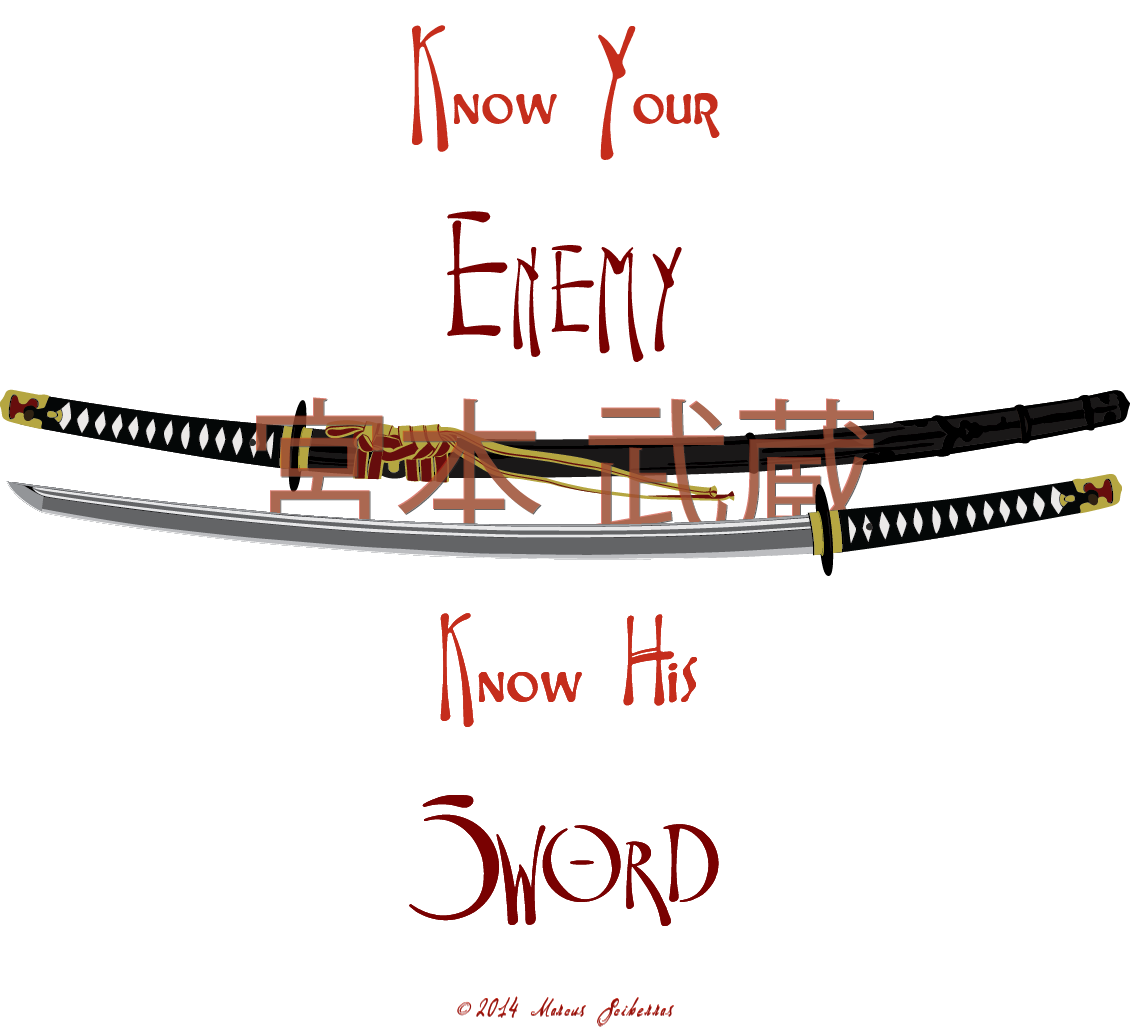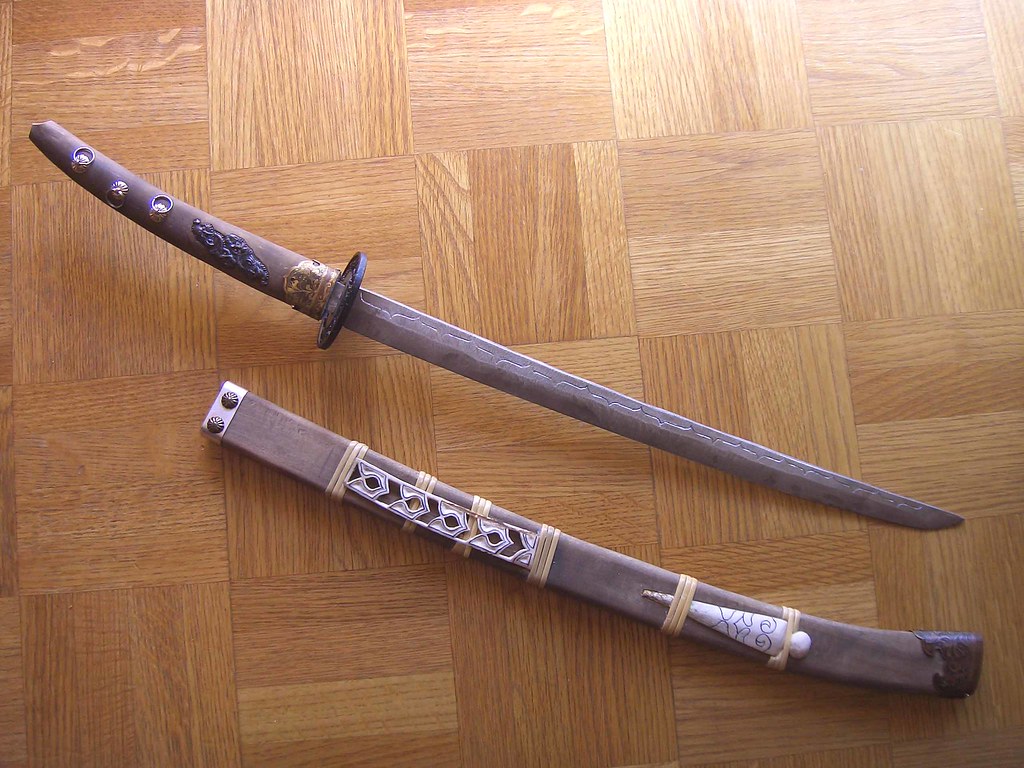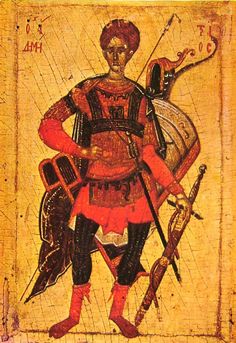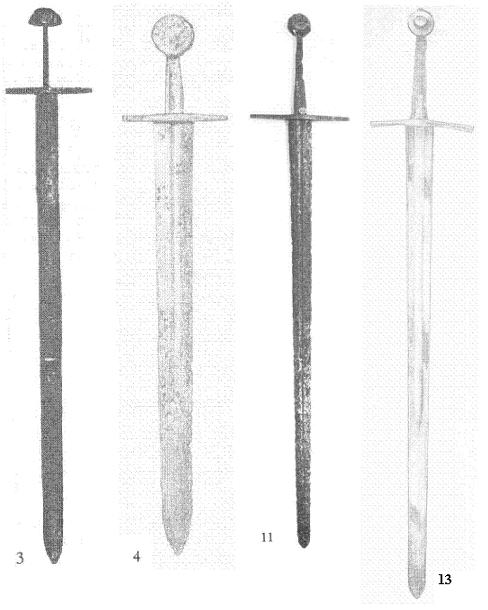|
|
Post by deuce on Sept 12, 2017 11:22:05 GMT -5
Great clip as Cold Steel tests out their "Norman Sword":
|
|
|
|
Post by deuce on Nov 9, 2017 1:51:10 GMT -5
Miyamoto Musashi: |
|
|
|
Post by Jason Aiken on Dec 20, 2017 13:25:22 GMT -5
I've been watching a lot of Forged in Fire lately and have started to feel the itch to move some metal myself.
I'm mulling over whether to go with a coal or gas forge. There are a ton of plans to do both online, including this trashcan forge.
Or this coal forge
|
|
|
|
Post by deuce on Jan 13, 2018 1:37:44 GMT -5
From the Kipling poem...  |
|
|
|
Post by kemp on Jan 25, 2018 4:14:12 GMT -5
The Persian quadarra, one of the most common swords in south-west Asia up until about 1000 AD.  The Persians actually had some influence on European swords. |
|
|
|
Post by kemp on Jan 25, 2018 4:24:04 GMT -5
It is interesting to note that the Vietnamese and Chinese also had swords that were designed to be held with two hands, such as the eastern swords highlighted by Deuce. The Chinese. Korean and south eastern Asian forms influenced the Japanese Tachi and the Katana. I think in the west when it comes to the study of the east Asian swords too much emphasis is disproportionately placed on the Japanese swords, which are in reality offshoots from the fighting blades already present on the Asian mainland. Cambodian version of the Dah Sword  |
|
|
|
Post by kemp on Jan 25, 2018 4:38:18 GMT -5
Cambodian Sword  Burmese dha  Korean swords  |
|
|
|
Post by kemp on Jan 25, 2018 4:54:30 GMT -5
Somehow doesn't feel complete unless I add a Thai blade  |
|
Deleted
Deleted Member
Posts: 0
|
Post by Deleted on Jan 25, 2018 12:44:22 GMT -5
Thanks for the fascinating selection of Eastern blades Kemp.
And welcome to the forum.
Hun.
|
|
|
|
Post by kemp on Jan 26, 2018 2:54:10 GMT -5
Thanks. I noted the swords from mainland Asia not to detract from the fascinating innovations made by the Japanese, but to put the study in its proper perspective. The tools and techniques used by the Japanese were adopted from their direct mainland neighbours. Clay hardened Katanas with their hard edges made great cutters when it came to opponents in lamellar armour such as other samurai opponents, but many of the Japanese swords would have shattered or become badly chipped against the plate and chain mail armour of medieval European Knights and warriors. If the Japanese had settled medieval Europe they might have adopted some of the heat treating procedures of European smiths and applied them to their sabers. Traditional methods of sword manufacture were also dictated by the available materials. A part of the attraction of traditional made katanas and wakis is the attractive hamon produced using clay to insulate a part of the blade giving the lines between the hard edge and softer back. Yoshindo Yoshihara sword  For those interested in Japanese Swords, their history, and how they are made I highly recommend ‘The Art of the Japanese Sword: The Craft of Swordmaking and its Appreciation'. www.amazon.com/Art-Japanese-Sword-Swordmaking-Appreciation/dp/4805312408 |
|
|
|
Post by kemp on Jan 26, 2018 3:12:30 GMT -5
The main population of the Japanese are descended from a mix of people that included older native populations, and groups that moved into the Japanese islands from southeast and northeast Asia, and it is thought that the ethnic image we associate with the Japanese formed between 400 BC and 1200 AD. The reason I digress a little here is to point out that the actual indigenous people of Japan are the Ryukyuan and Ainu who continued to dominate in Okinawa and Hokkaido until several centuries ago, and history records conflict between the encroaching authority of the Japanese and the older Ainu of Hokkaido as recently as Shakushain’s Revolt 1699 – 1672. The Ainu were led by Shakushain ( almost an Ainu version of Gorm ) who was able to bridge regional differences between the Ainu and concentrate them to a certain extent against the Yamato people ( ethnic Japanese ) before they were defeated by the Tokugawa. These days, the Ainu survive as an indigenous minority in Hokkaido, with some small representation in Russia’s Sakhalin. Here is an Ainu sword. It also shows east Asian regional influences, but with a decidedly Ainu tribal lent to it.  |
|
|
|
Post by kemp on Jan 26, 2018 21:41:08 GMT -5
On the subject of swords with tangs that can accommodate a two handed grip I would like to turn our attention to southeastern Europe. Oakeshott made some note that the first references or depictions of European swords that would accommodate a hand a half and two hand grip came from Byzantine. This was in his book 'Records of the Medieval Sword'. Some of these are found in Byzantine frescoes. A late Byzantine Cavalryman  Depiction of large Byzantine sword  |
|
|
|
Post by zaskar24 on Jan 27, 2018 9:39:11 GMT -5
Nice finds Kemp. Is there anything indicating a date for the them? I ask because there is an sword with a hand and a half grip that Oakeshott dates to the early twelfth century at the earliest in the Museum and Art Gallery in Glasgow of Northern European origin.
|
|
|
|
Post by kemp on Jan 27, 2018 20:51:45 GMT -5
Nice finds Kemp. Is there anything indicating a date for the them? I ask because there is an sword with a hand and a half grip that Oakeshott dates to the early twelfth century at the earliest in the Museum and Art Gallery in Glasgow of Northern European origin. Zaskar24, no exact dating on the frescoes, other than that they are of late Byzantine style, but Oakeshott notes in his book 'Records of the Medieval Sword’, information relating to a medieval Byzantine manuscript written 1050 – 1075 by Scylitzes, an annalist to the court of Constantinople during the mid 11th century, and that it was illustrated with detailed military scenes included a number of swords, two with long grips, note made that one of the grips looked like a 2nd century depiction of a long gripped sword from a stone stele from Palmyra in Syria. Please refer to figure 14 and 15 on page 159 of Records of the Medieval sword. www.scribd.com/doc/116056681/EWART-OAKESHOTT-Records-of-the-Medieval-SwordTwo handed Byzantine sword dated to the 10th/11th century.  sword-site.com/thread/922/hander-byzantine-sword sword-site.com/thread/922/hander-byzantine-swordAccording to Oakeshott there is enough evidence to show that long gripped swords were in use from the 2nd until the 12th century in the Near east and central Asia, cropping up in Turkestan, Iran and the aforementioned Palmyra. Of course, the longhilted sword was probably known amongst some of the ancient Celts, an early Iron Age sword find in Orton Meadows, now held at the British Museum, dated to 500 – 200 BC had an exceedingly long blade of 45 inches, the tang might have been for two hand use, although damaged. Celtic Iron Age swords. Note that some of the tangs in this group are longer than the nearby single handed examples.  |
|
|
|
Post by kemp on Jan 27, 2018 21:09:58 GMT -5
Oakeshott roughly dated the early hand and a half/ two handers XIIIa , XIIa and XVIa types to the 13th and 14th centuries for the period of greatest use, citing that the long hilted XIIIa was used extensively in north western Europe 1250 – 1350. However, he was careful to note that the Finnish Viking swords examined by Jorma Leppaaho propably corresponded to a date no later than the first quarter of the 12th century, and amongst the finds what seems to be long hilted sword types The Glasgow Museum and Art Gallery, as I understand it, has quite an extensive collection. Zaskar, are you referring to the long hilted XIIIa with the faceted pommel, of unknown find. The faceted wheel form shape was a pommel type found among the Leppaaho Viking swords. It also has an early style cross hilt, the Gaddhjalt Spike Hilt by the Vikings. Given its features Oakshott thinks it more likely that it should be dated to 1100 -50. What I find particularly interesting is that Oakeshott said that he could have just as easily classified the sword as a sub type XIa given its features. Think about that, that would mean a long hilted version of an earlier type than the XIIIa or XVIa sword types. Refer page 104 www.scribd.com/doc/116056681/EWART-OAKESHOTT-Records-of-the-Medieval-Sword It is interesting that you bring up the Glasgow Museum sword since I will be focusing on northern European sword finds at a future time, although my focus at this given time is south eastern Europe. |
|